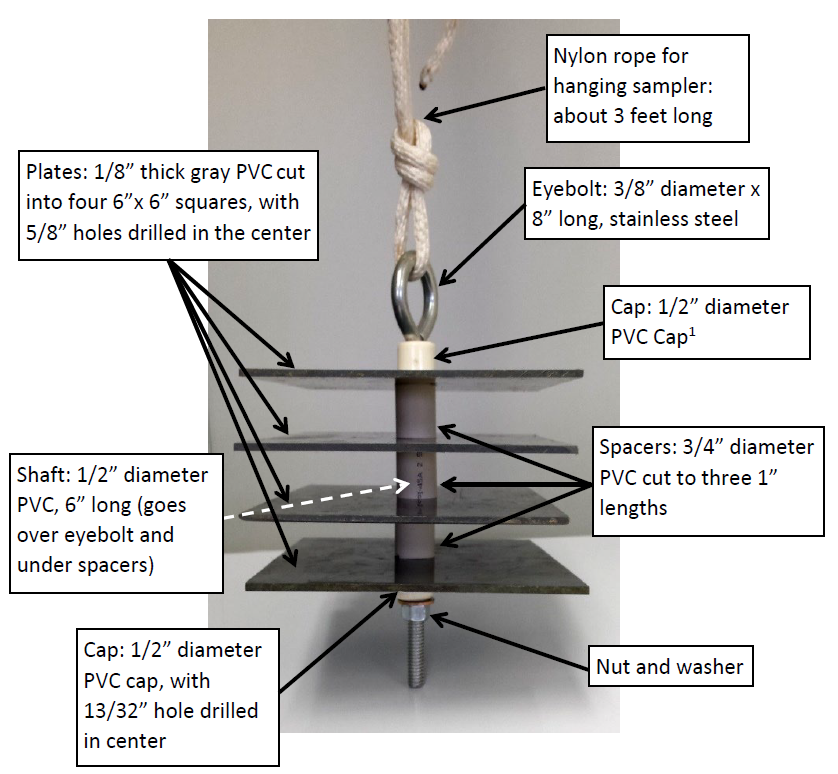Monitoring & Prevention
Property Owners
Lake associations and property owners can be a major influence in curbing the spread of zebra and quagga mussels. If you believe you have identified zebra or quagga mussels in your waters, check with your state’s or province’s aquatic invasive species program to ensure proper reporting. Avoid taking samples or removing any mussels from the water until you have contacted your state’s or province’s aquatic invasive species program and received guidance or instruction; possession and/or transport of zebra and quagga mussels is prohibited in many jurisdictions.
Prevention Planning
Developing a prevention plan for your body of water can be a helpful tool in preventing the introduction or establishment of zebra and quagga mussels. Consider how you may determine the potential for introduction of invasive species, and contact your jurisdiction’s aquatic invasive species program for information about how to monitor for invasive species. See the California Department of Fish and Wildlife’s Guidance for Developing a Dreissenid Mussel Prevention Program for more specific guidance on developing a prevention plan. Remember to always consult your local and state/provincial agencies before undertaking any activities related to invasive mussels. Different jurisdictions may have specific recommendations and guidance for specific types of activities, and local, state, provincial, and federal authority must be followed at all times.
Some important points for consideration within a prevention plan include:
Water Body Users
- Who uses my body of water?
- How many people typically visit my body of water per week?
- How knowledgeable may these people be about invasive mussels?
Water Body Uses
- Are motorized watercraft launched into my water body?
- Are watercraft other than boats (e.g. jet skis) used in my body of water?
- What types of gear are used in the water (e.g. for fishing)?
- Are any watercraft or gear left in the water overnight, or for an extended period of time during the season?
Water Body Access
- During which month(s)/season(s) is my water body open for use?
- How many days per week is my water body open for use?
- How many hours per day is my body of water open for use?
Current Practices
- Are there any programs (e.g. boat launch inspections) currently in place to prevent the introduction of invasive species into my water body?
Expert Contacts
- Who should I contact in my state or province if I think zebra mussels or other invasive species are present in my water body?
Monitoring
Creating a sampling plate can be an easy, quick, and inexpensive way to determine if zebra mussels are present in your body of water. Sampling plates can be placed almost anywhere in a lake and can be checked at any time of year, unlike docks which can typically only be examined when they are removed in the fall.
If zebra mussels are found, it is important to contact your state or province’s invasive species reporting line. In some jurisdictions, reports should be made directly to invasive species specialist, while other jurisdictions utilize reporting hotlines and email inboxes that are accessed by a variety of specialists. To learn how to report findings, visit our Find an Expert page.
Further information about sampling plates and other methods of searching for invasive mussels is available from the Minnesota Department of Natural Resources in their How to Search for Zebra Mussels document. Information about state and provincial monitoring and management programs for invasive mussels is available in our Library, along with other resources for developing prevention plans for property owners.
How to Build a Sampling Plate:

Photo Credit: Minnesota Department of Natural Resources
Resources & Publications
Zorinsky Lake Zebra Mussels-Summary Poster
US. Corps of Engineers
Zequanox Application Technique Pilot Study on Lake Erie
Megan M. Weber, Marrone Bio Innovations; Michigan Department of Environmental Quality
Zebra Mussels Invade Ontario Waters
Ontario's Invading Species Awareness Program
Riley T. Lovejoy, Alyssa N. Kandow, Jennifer G. Howeth


